Upon reaching the end of South Bridge Rd., Jandy and I were now at the banks of the historic 6-km. long (19,690-ft.) long Singapore River. Here, we viewed a number of pedestrian and vehicular bridges that span this river, serving the needs of Singaporeans and visitors alike by connecting residential, commercial and entertainment areas. They also add history (rickshaws, ox carts, cattle, horses, etc. used to pass here), high technology and color to the Singapore skyline. Three of these bridges – Anderson Bridge, Cavenagh Bridge and Elgin Bridge – were, on November 3, 2008, selected for conservation as part of the Urban Redevelopment Authority’s expanded conservation program. The Anderson Bridge and the newer Esplanade Bridge also forms part of the Singapore Grand Prix‘s Marina Bay street circuit which debuted on September 28, 2008.
The Cavenagh Bridge, opened in 1870 (the third bridge to be built in Singapore) to ease access between the civic district on the north bank and the commercial district (now Raffles Place) on the south bank , is the oldest among the original bridges spanning the Singapore River. It spanned the lower reaches of the Singapore River in the Downtown Core. Before this bridge was built, people could only get to the 2 districts via a detour over Elgin Bridge or by paying 1 duit (¼ cent) for a boat ride across the river. Originally known as the Edinburgh Bridge (to commemorate the visit of the Duke of Edinburgh), it was renamed in honor of Maj.-Gen. William Orfeur Cavenagh, the last India-appointed Governor of the Straits Settlements (1859-1867). His family’s coat-of-arm scan still be seen atop the sign at both ends of the bridge.
Cavenagh Bridge, originally designed as a drawbridge, is also Singapore’s first and only steel suspension bridge, with elaborate suspension struts. During construction, numerous steel rivets were used and steel casting methods commonly used during that era were employed. Its parts were manufactured by P & W MacLellan, Glasgow Engineers (Scotland ) at a cost of S$80,000, built and tested in Glasgow to withstand a load 4 times its own weight, shipped to Singapore in parts and it reassembled by Indian convict labor. Subsequently, in the late 1880s, the bridge became overloaded due to the flourishing trade on the Singapore River and vehicular traffic volume overtook the capacity of the bridge. Added to this was its low draught which was insufficient for the passage of boats during high tide.
The bridge was eventually spared from demolition by conversion to a pedestrian bridge. In the 1990s, lighting was added to accentuate its architectural features at nightfall. It now complements the renovated Fullerton Hotel (formerly the Fullerton Building) beside the bridge. At the southwest abutment of the bridge are sculptures of a family of Singapura cats (kucinta or drain cats), recognized as one of the smallest breeds of cats in the world. At both ends of the bridge are preserved police notices restricting the passage of vehicles that weighed beyond 3 CWT (152 kgs. or 336 lbs.), including cattle and horses.
Cavenaugh Bridge’s replacement was the century-old Anderson Bridge, near the river’s mouth, which provided sufficient clearance for vessels to pass under during high tide. Connecting the financial district directly to City Hall, this bridge is also located near the Fullerton Hotel and the former Merlion Park. An excellent combination of intricate plaster and metalwork, this elegant bridge has 3 steel arches with supporting steel ribs across them, 2 rusticated archways and a fluted pier on each end. The abutments were built by the Westminster Construction Company Limited. Started in 1908, it was officially opened on March 12, 1910 by Sir John Anderson (Governor of the Straits Settlements and High Commissioner for the Federated Malay States from 1904–1911) after whom the bridge was named. During the 1942-1945 Japanese Occupation, the severed heads of criminals were hung on the bridge as a warning to discourage citizens from breaking the law.
The slightly younger, concrete Elgin Bridge, a vehicular bridge in the Boat Quay area linking the Downtown Core to the Singapore Planning Area located within Singapore’s Central Area, was named after India governor-general (March 21, 1862-November 20, 1863) Lord James Bruce, the 8th Earl of Elgin. Elgin Bridge is believed to have existed, as early as 1819, at its current location as an unnamed footbridge linking the Chinese community, on the southern side, to the Indian merchants of High St. on the northern side. As this was the first bridge across the river, the two roads leading to it were named North Bridge Rd. and South Bridge Rd. accordingly.
In 1822, this footbridge was replaced by the Presentment Bridge, a wooden drawbridge (also called the Monkey Bridge, as its narrowness limited the number of people crossing at a time, therefore using it required some agility) was built by Lt. P. Jackson. In 1843, a wooden footbridge, built by John Turnbull Thomson replaced the drawbridge (also called the Thomson Bridge). In 1862, an iron bridge was built but, in 1925, the iron bridge had to make way for the new, existing bridge which was opened to traffic by Sir Hugh Clifford, Governor of the Straits Settlements, on May 30, 1929.
At one end of the bridge is the crest of the Singapore Municipal Commission. Its elegant cast iron lamps, on both sides of the bridge, were designed by the Italian sculptor Cavaliere Rudolfo Nolli whose signature graces the bronze plaques beneath the lamps, each with a lion standing in front of a royal palm tree engraved on it. Elgin Bridge is known as thih tiau kio in Hokkien, meaning “iron suspension bridge.”
The 260 m. (850-ft.) long, 70 m. (230-ft.) wide, low-level concrete arched Esplanade Bridge, a vehicular and pedestrian bridge along Esplanade Drive, in front of the mouth of the Singapore River, was built, from early 1994-1997, to provide faster access between Marina Center and the Shenton Way financial district. After completion, it was found out that the bridge blocked views of the iconic Merlion statue from the Marina Bay waterfront, causing the statue to be transferred from the back to a more prominent place at the front of the bridge.
The Esplanade Bridge has 7 spans and supports two 4-lane carriageways and walkways along both sides. The bridge offers panoramic views of Marina South, the rest of Marina Bay and both sides of the Singapore River. As such, it is often subject to occasional road closures during National Day and New Year’s Eve and the street lamps along it are shut off to allow spectators, pedestrians and revelers who pack all 8 lanes of the bridge a pleasant and unadulterated view of the fireworks.
The Helix Bridge, next to Bayfront Ave., was opened on July 18, 2010. Previously known as the Double Helix Bridge, it is the world’s first curved bridge. This 280 m. (918-ft.) long pedestrian bridge is (Singapore’s longest) is located beside the Benjamin Sheares Bridge and is accompanied by the Bayfront Bridge, a vehicular bridge. The Helix Bridge links the hotels, commercial buildings and shops of Marina Center with Marina South in the Marina Bay area (a body of water formed through land reclamation at the mouth of the Singapore River).
The bridge has 5 strategically located viewing platforms sited at strategic locations. They provide stunning views of the Singapore skyline and events taking place within Marina Bay. The bridge also functions as a gallery where children’s paintings and drawings are exhibited for public viewing. The bridge is illuminated at night by a series of lights that highlight the double-helix structure, thereby creating a special visual experience for the visitors. Pairs of colored letters “C” (cytosine), “G” (guanine), “A” (adenine) and “T” (thymine), representing the bases of DNA, are lit up in red and green.
The Helix Bridge was designed by an international consortium including the Cox Group of Australian architects, Arup engineers, and Singapore’s Architects 61 and was fabricated and erected by TTJ Design and Engineering. The bridge’s design features a series of connecting struts that hold together two spiraling steel members that resembles the structure of DNA (the building blocks of life), symbolizing life and continuity, renewal, abundance and growth, with the aim of attracting happiness and prosperity to Marina Bay.
It used approximately 650 tons of duplex stainless steel and 1,000 tons of carbon steel tubes to create the bridge’s major and minor helix that spirals in opposite directions. To provide shade for pedestrians, canopies made of fritted glass and perforated steel mesh were incorporated along parts of the bridge’s inner spiral.
The Coleman Bridge, a vehicular bridge linking Hill St. and New Bridge Rd., near Clarke Quay, was the second bridge built across the Singapore River and the first built in masonry. Part of the bridge demarcates a boundary between the Downtown Core and the Singapore River Planning Area, both located within the Central Business District. It first started out as a 9-arched brick bridge, built in 1840, designed by and named after Irish architect (Singapore’s first) George Drumgoole Coleman (1795–1844). It was referred to as the New Bridge, lending its name to New Bridge Road, the roadon its southern end.
In 1865, the brick bridge was replaced by one made of not well constructed wood and, in 1886, an ironbridge was built to replace it. Considered one of the most attractive spanning the Singapore River, this iron bridge, however, was unable to cope with the increasingly heavy traffic flow between New Bridge Road and Hill Street and was finally demolished in 1986 and was replaced by the present concrete bridge. However, in recognition of its historical significance, the new bridge incorporated several features of the iron bridge such as the decorative lamp posts and iron railings. The Coleman Bridge is known, in Cantonese, as yi ma lo khiu (“the bridge at the second road”).

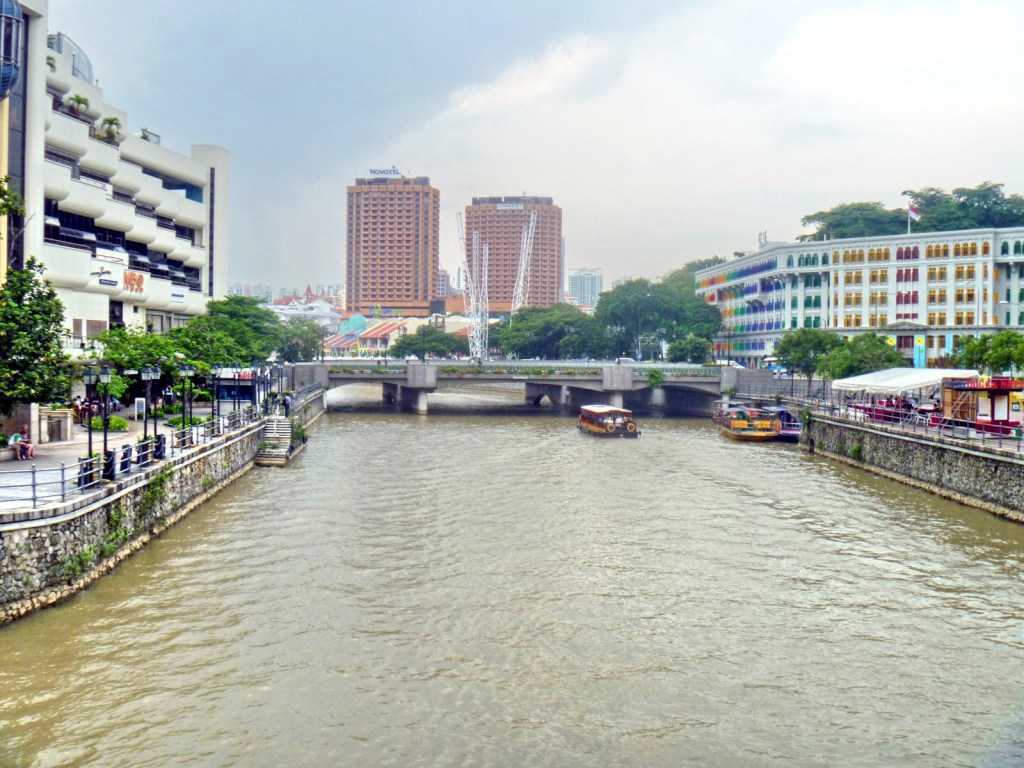
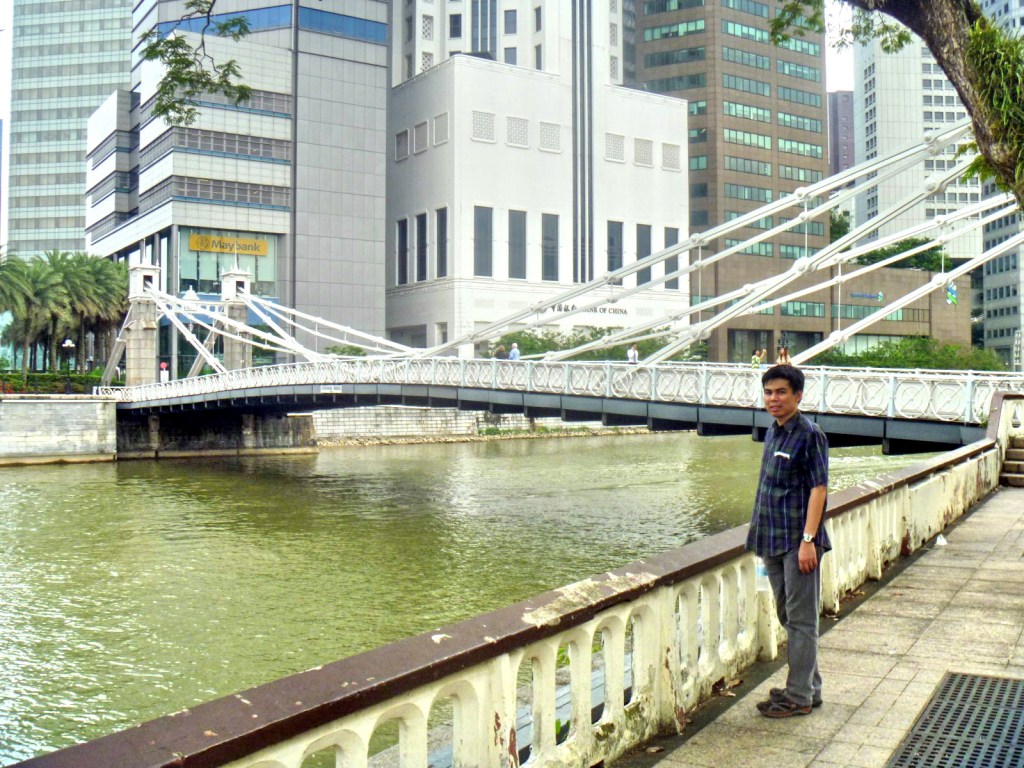
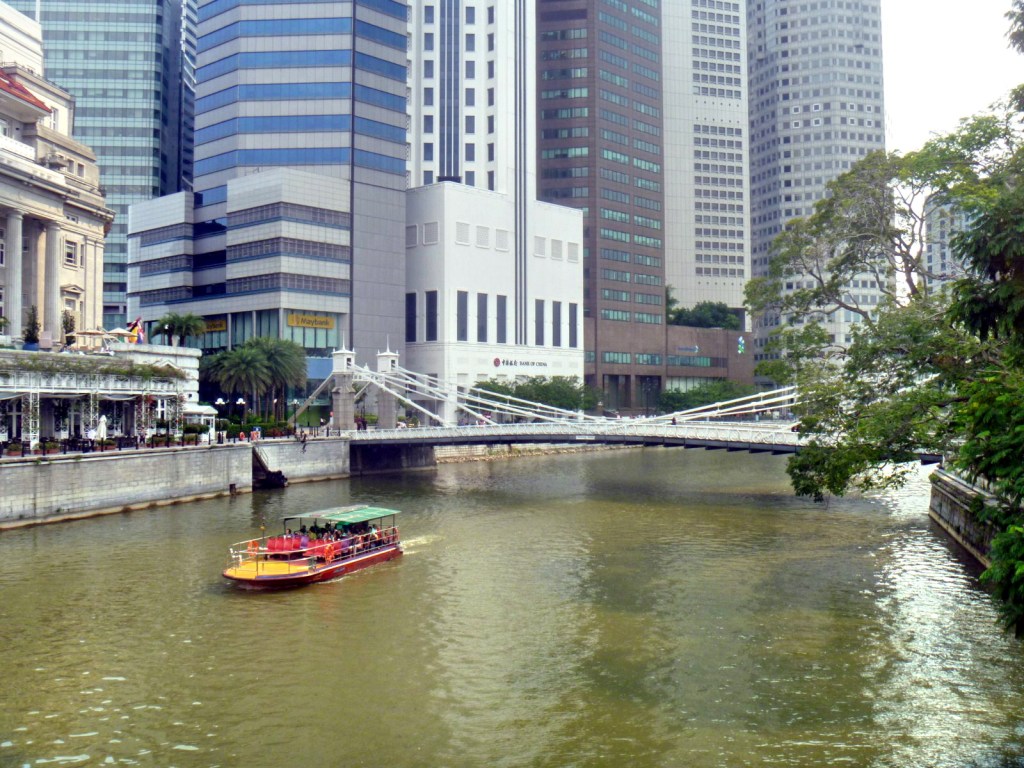
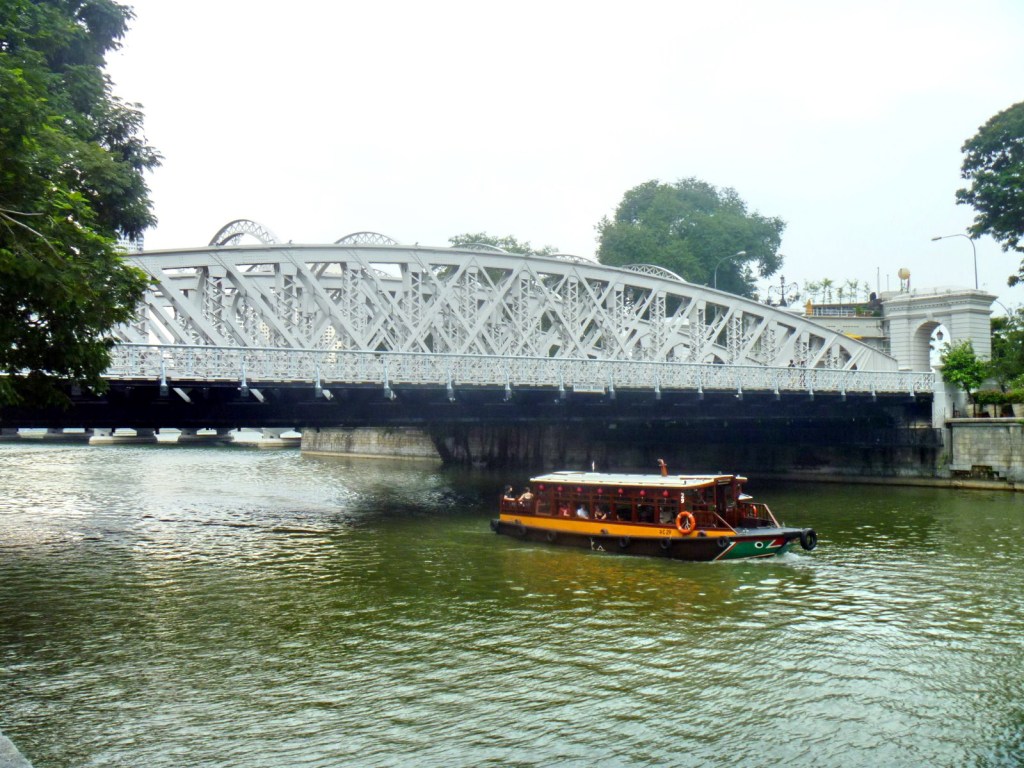
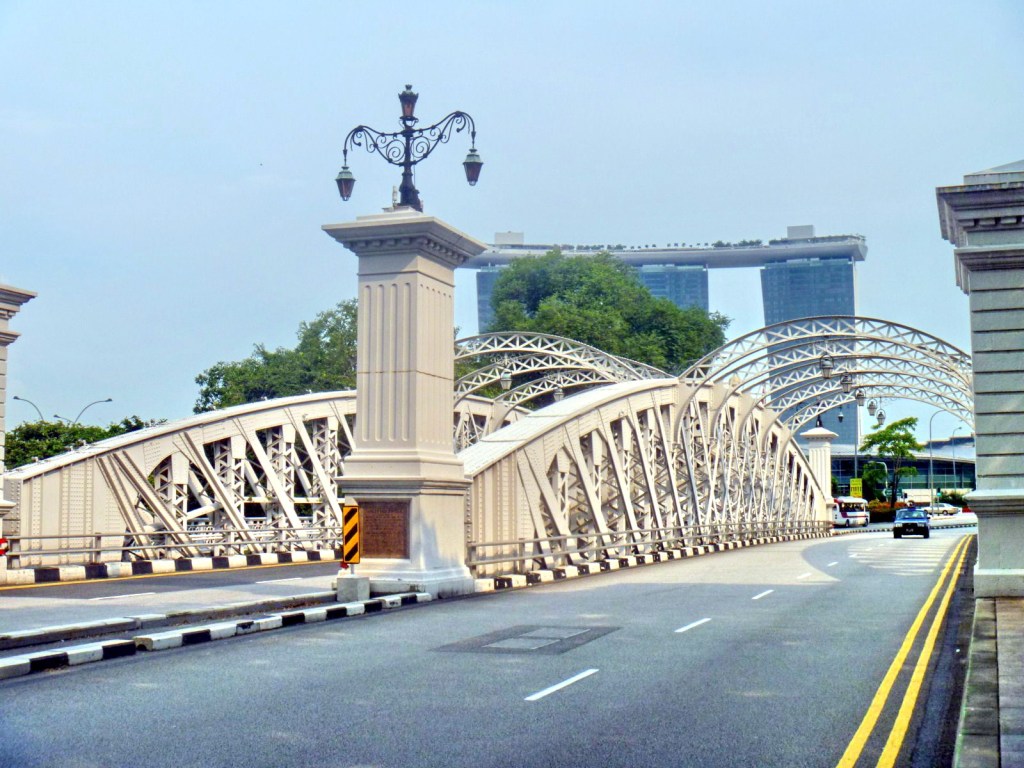
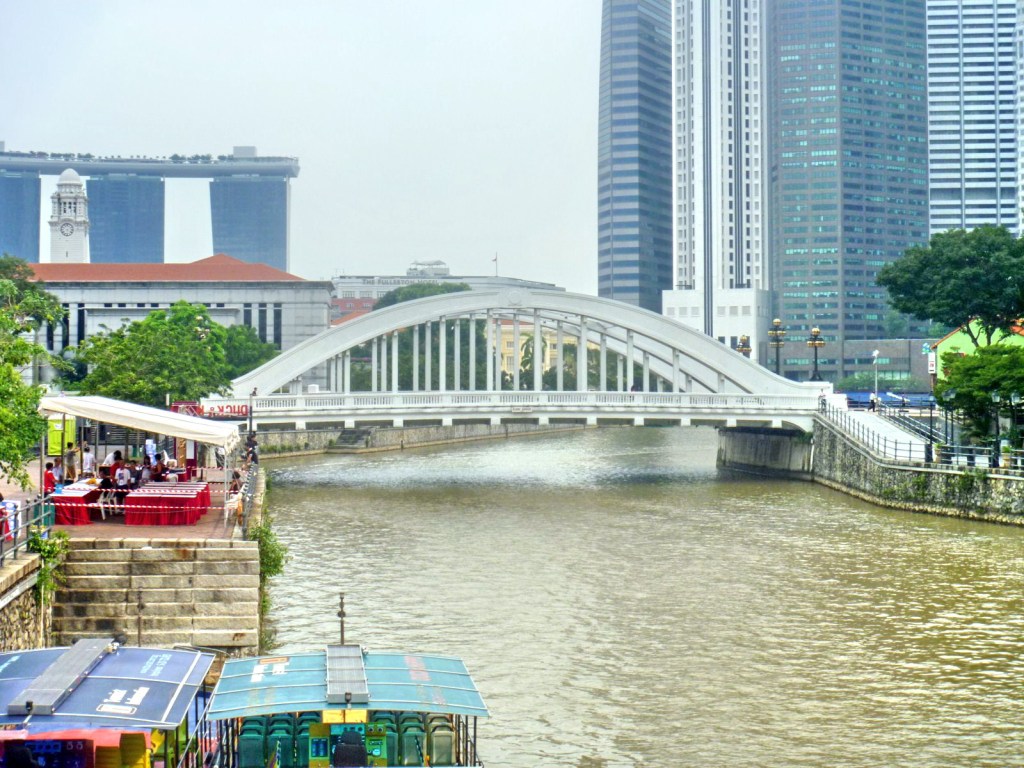
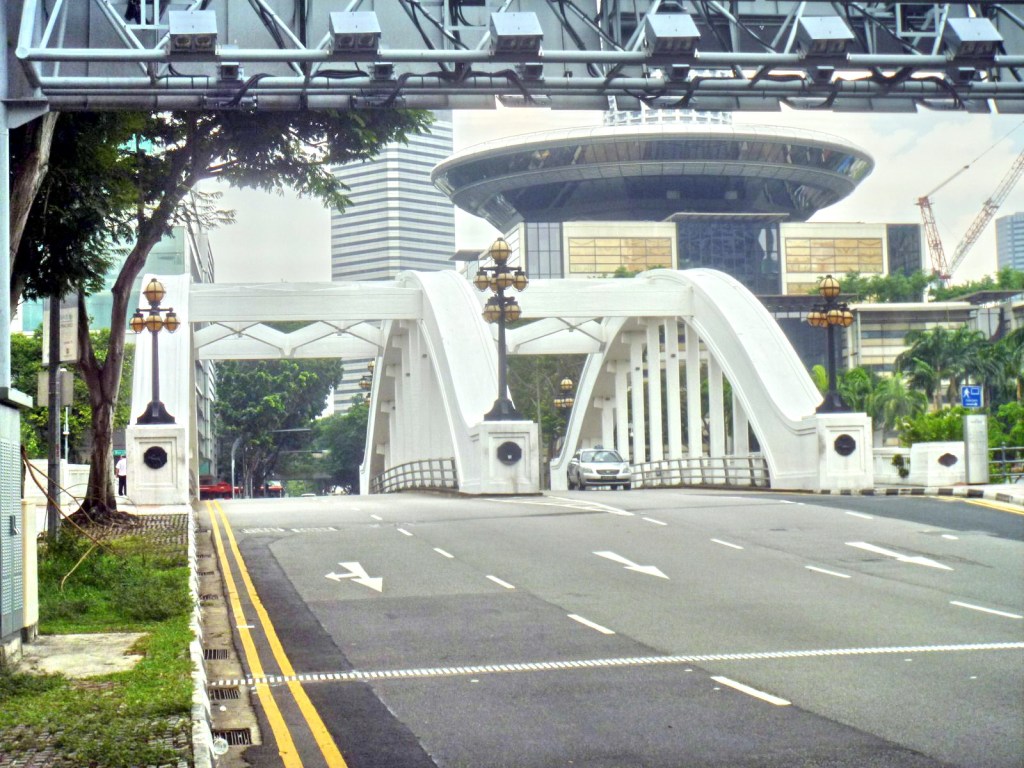
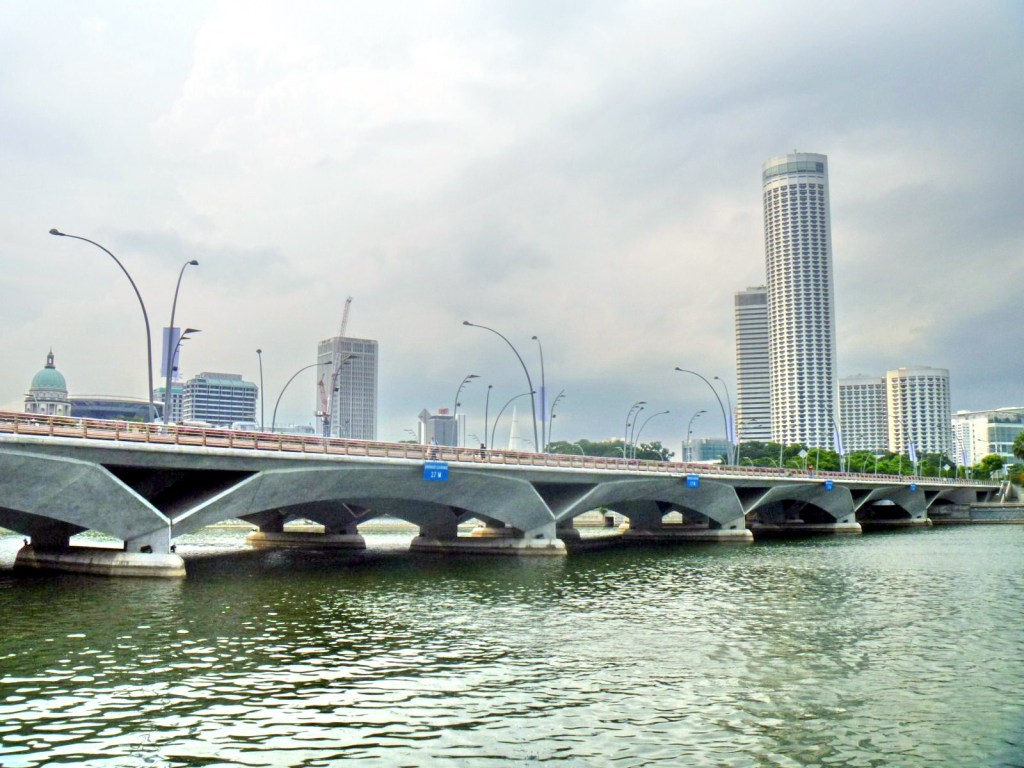
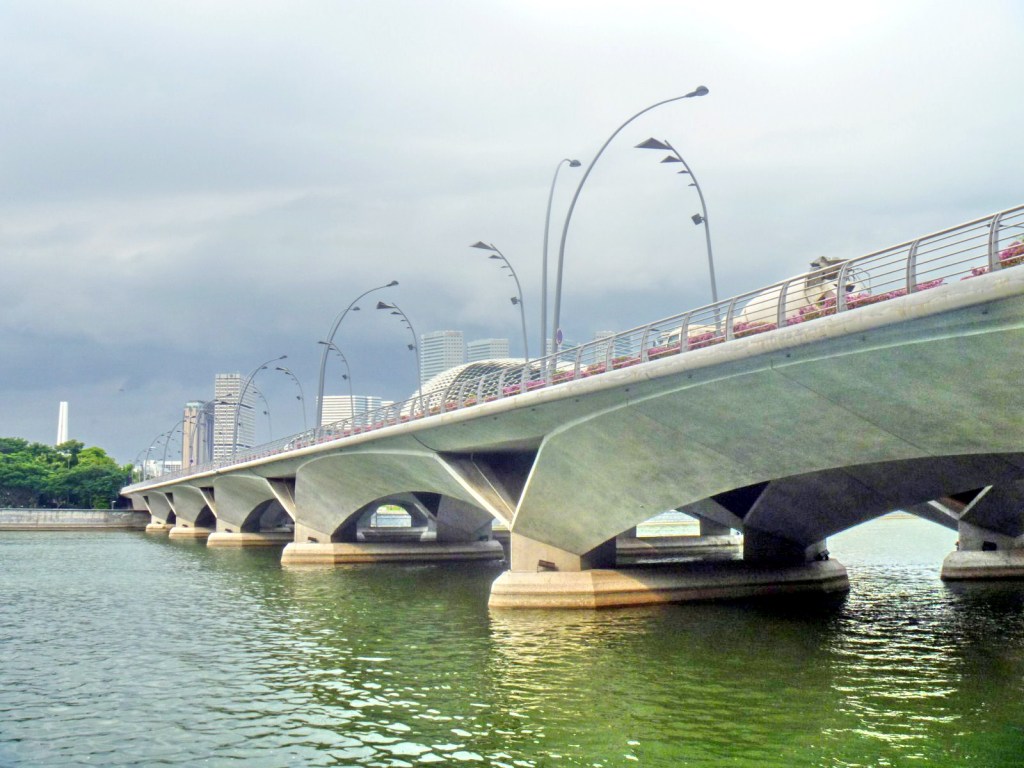
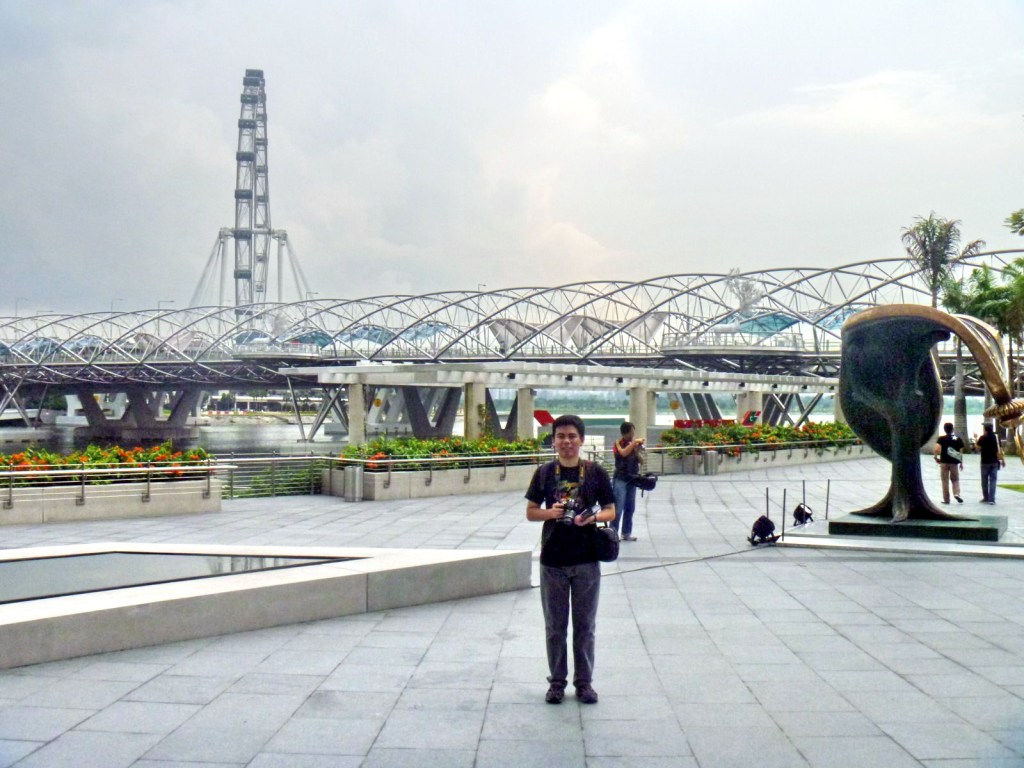
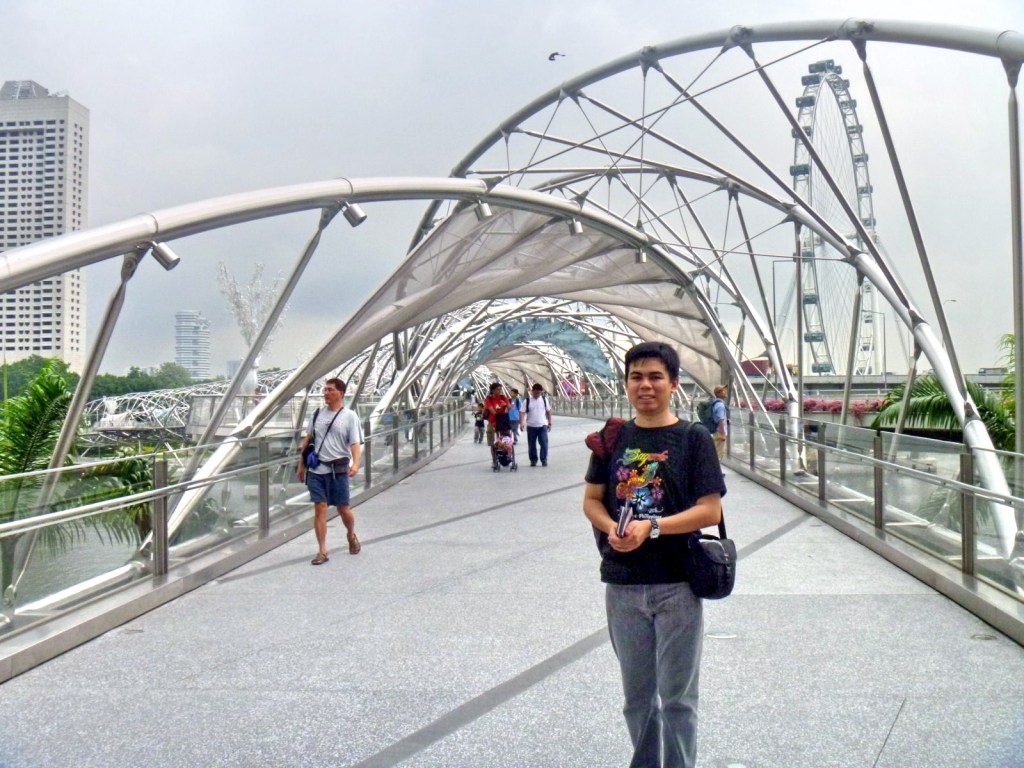
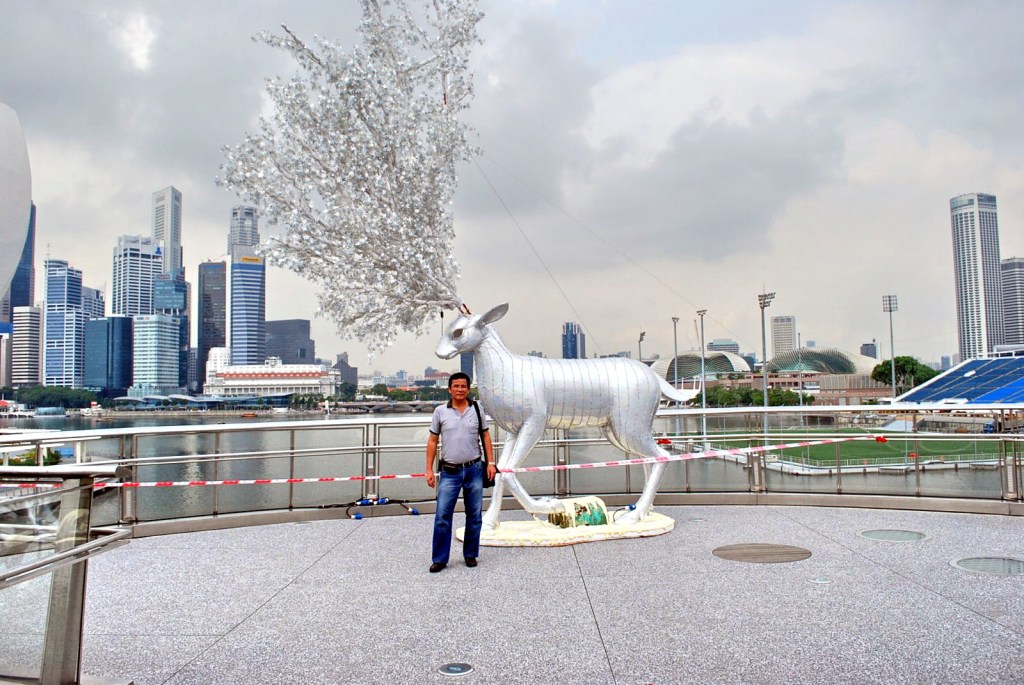
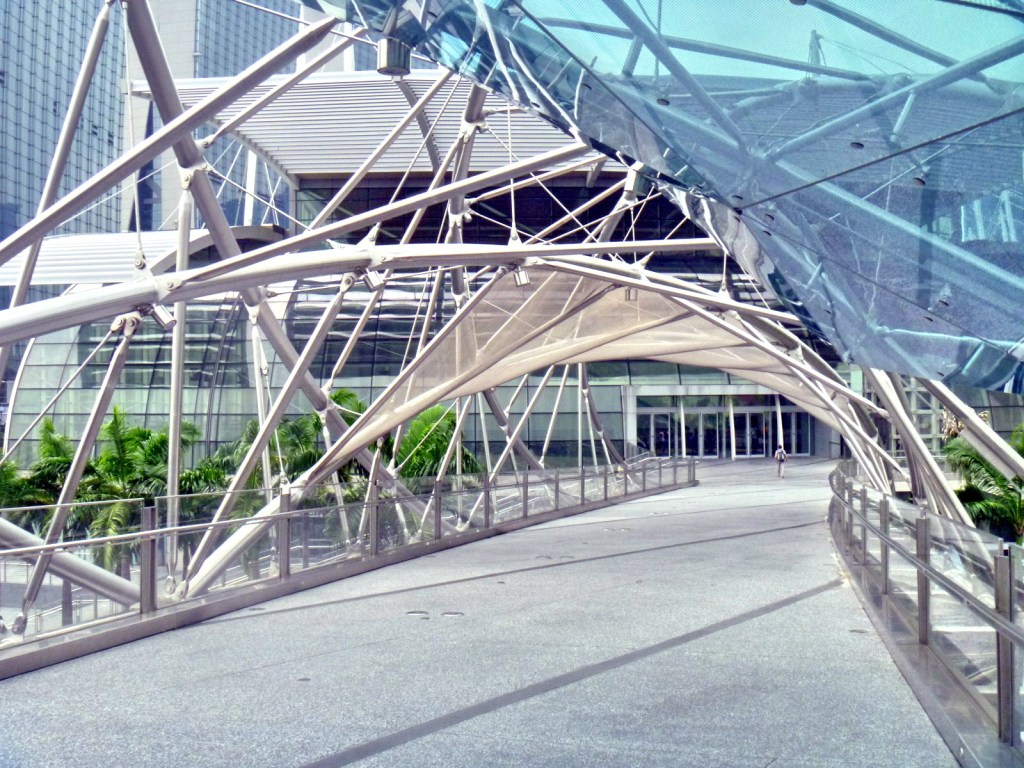
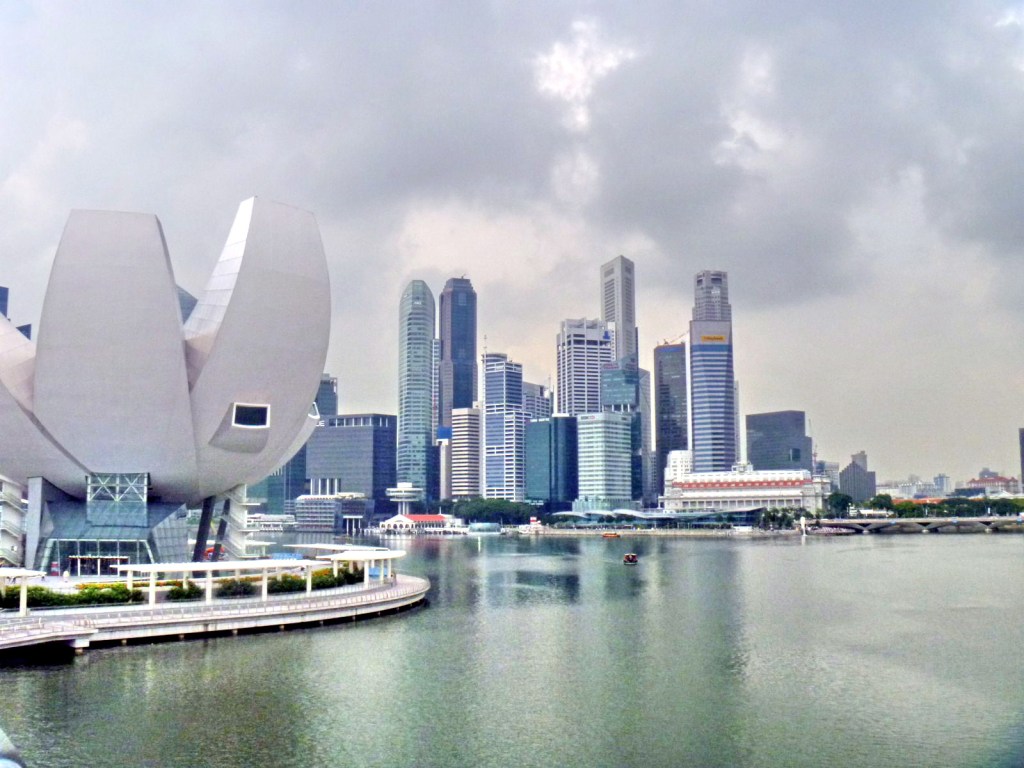
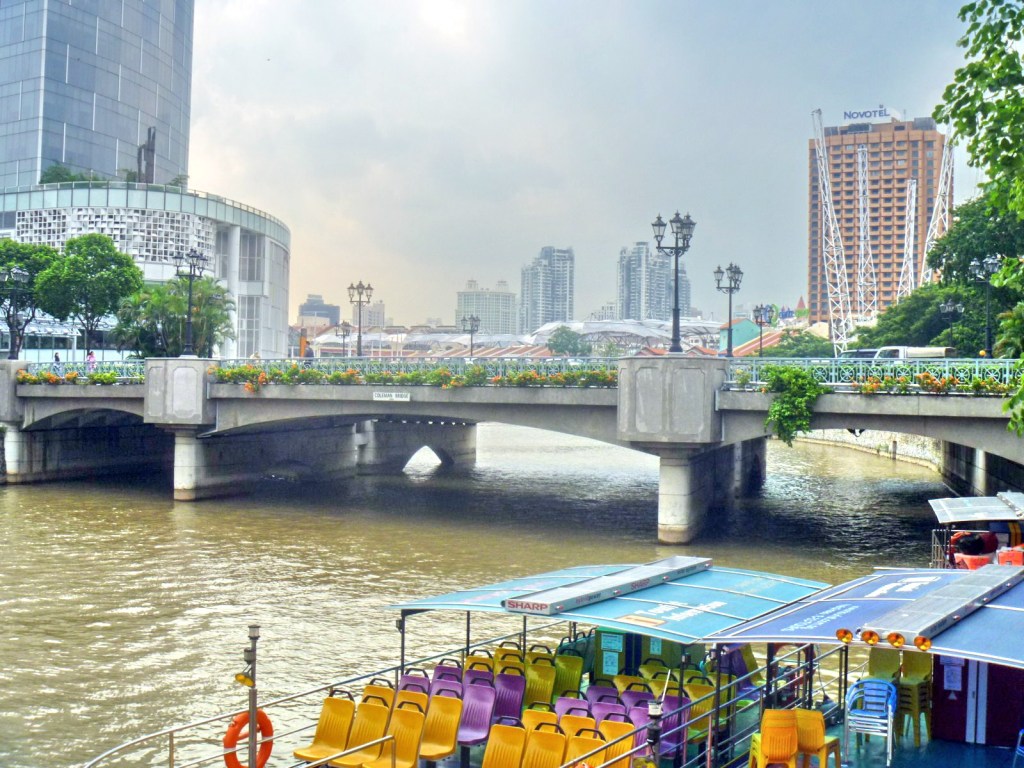
Great post thanks for sharing.nice view
Thanks for your comment Megan. Much appreciated
Such a article. I want to talk. Please contact me by email divingcyprus[at]gmail[dot]com.